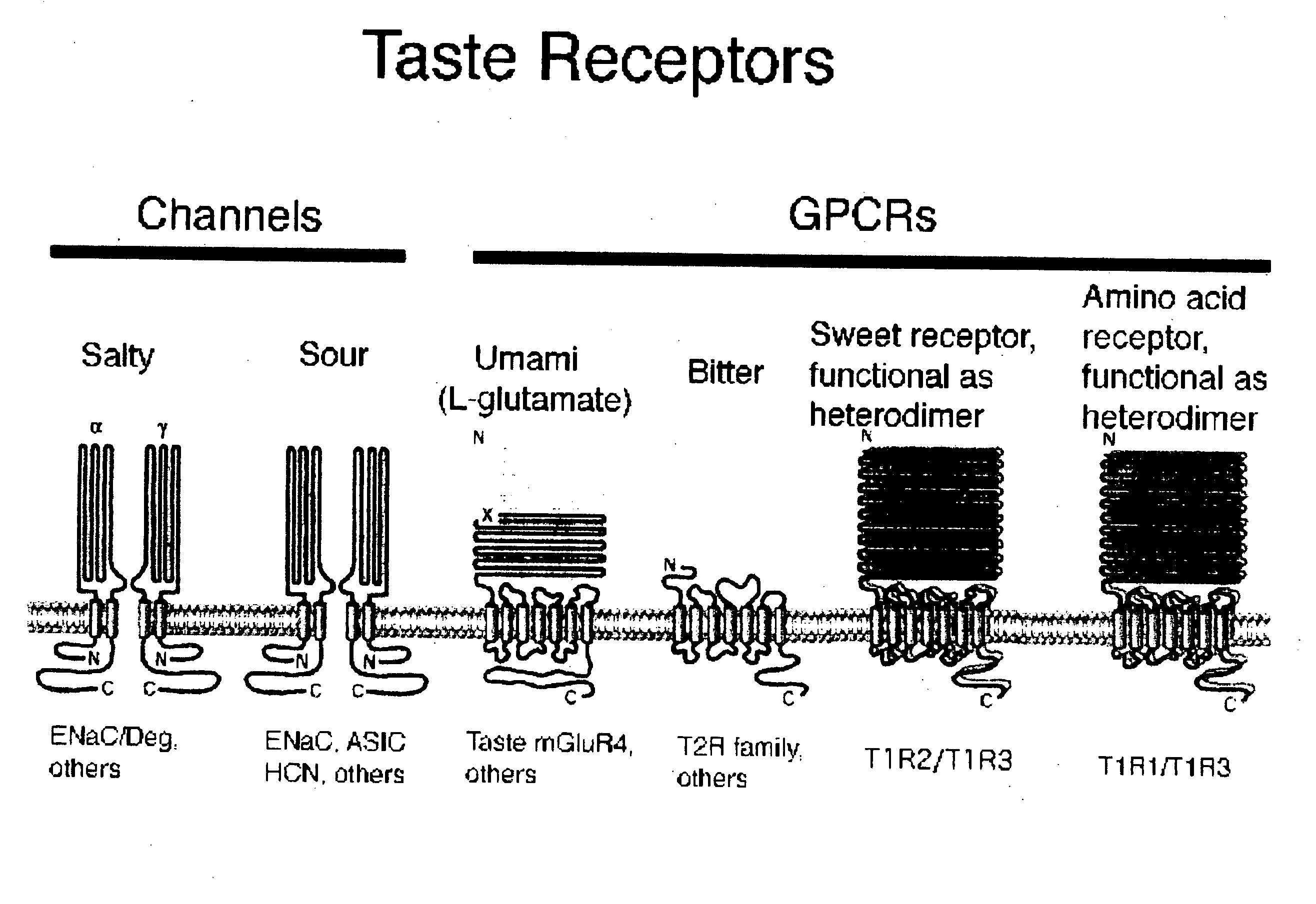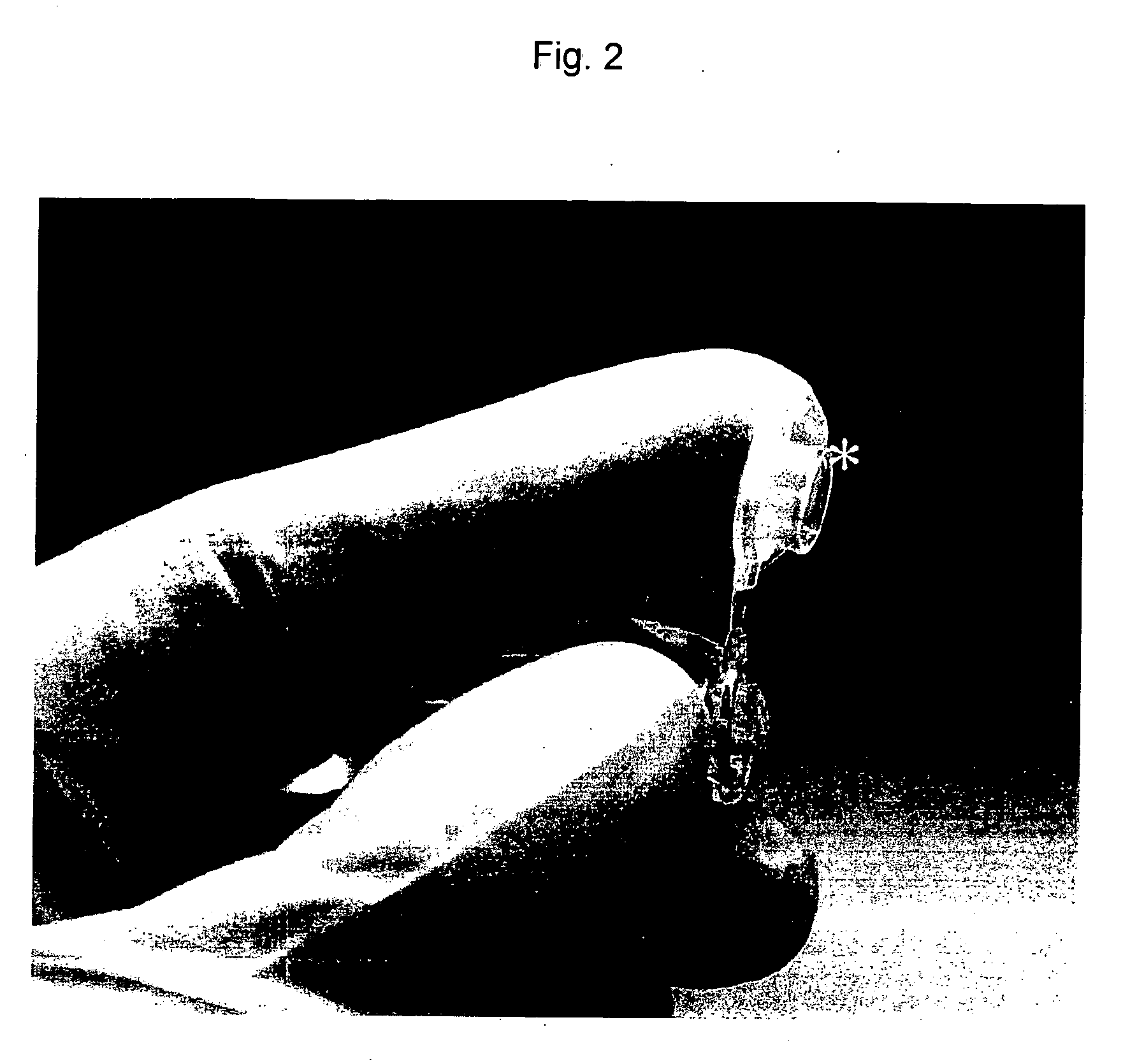Novel Test Method For Taste Abnormality
a new type of test method and taste technology, applied in the field of dysgeusia testing, can solve the problems of difficult to objectively grasp the pathologic condition, difficult to say that dysgeusia treatment is effective, and hardly becomes the object of interest for researchers
- Summary
- Abstract
- Description
- Claims
- Application Information
AI Technical Summary
Problems solved by technology
Method used
Image
Examples
example 1
AMPLIFICATION OF TASTE RECEPTOR GENE
(1) Method of Collecting Tissues
[0062]In the present example, in order to examine a site from which tissues are collected, two types of collection methods, namely, (a) a surgical collection method using a knife and (b) a method of collecting tissues by the scratch method, were carried out. However, in the case of the patients with the disorder of the sense of taste as shown in FIGS. 8 and 9, tissues were collected by the scratch method in (b) above. In such collection methods, the oral cavity has been well washed with water or the like, before tissues are collected.
[0063](a) Method of Collecting Tissues Using Knife
[0064]As shown in FIG. 3, using a knife, a 2-mm piece of tissues was collected from fungiform papilla of the dorsum of tongue (confirmed by visual observation), or from fungiform papilla or foliate papilla of the lingual surface located 3 cm apart from the proglossis.
[0065](b) Method of Collecting Tissues by Scratch Method
[0066]Tissues o...
example 2
EXAMINATION OF COLLECTION SITE AND COLLECTION METHOD
[0071]For the examination of the present example, tongue tissues collected from a healthy subject were used. FIG. 6 shows the expression of a taste receptor in each portion of tongue tissues collected by surgical means described in Example 1, (1), (a). FIG. 6 A to C show the expression of the THTR family, and FIG. 6 D to F show the expression of the T2R family FIGS. 6 A and D show the results obtained by performing RT-PCR on tissues obtained from the dorsum of tongue, and FIGS. 6 B and E show the results obtained by performing RT-PCR on fungiform papilla tissues obtained from the lingual surface located 3 cm apart from the proglossis. FIGS. 6 C and F show the results obtained by performing RT-PCR on tissues obtained from foliate papilla tissues. As a result, a taste receptor was hardly expressed in the tissues obtained from the dorsum of tongue. In contrast, the expression of taste receptors of the THTR and T2R families was observe...
example 3
EXPRESSION OF TASTE RECEPTOR OF PATIENT WITH DISORDER OF SENSE OF TASTE
[0074]In the present example, the expression pattern of the taste receptor of a patient with the disorder of the sense of taste was examined. Tissues were collected by a noninvasive method of scratching foliate papilla tissues (described in Example 1, (1), (b)).
[0075]FIG. 8 (THTR family) and FIG. 9 (T2R family) show the expression pattern of the taste receptors of total 17 patients including those with the disorder of the sense of taste. In both FIGS. 8 and 9, since almost no total RNA was extracted from the tissues of patient Nos. 16, 17, and 20, these numbers became unassigned numbers. The details of the diagnoses of these subjects or the like are shown in Table 3.
TABLE 3Information of target patientsAgeSexDiagnosisComplicationDrugSalivaZincIronRemarks178FDisorder of taste sense (spontaneousCataracta, anxiety neurosisLendormin2.376851Sweetness: 4.5, Bitterness: 3.5, Saltiness / Sourness: 3.5dysgeusia, bitterness)...
PUM
| Property | Measurement | Unit |
|---|---|---|
| temperature | aaaaa | aaaaa |
| temperature | aaaaa | aaaaa |
| temperature | aaaaa | aaaaa |
Abstract
Description
Claims
Application Information
 Login to View More
Login to View More - R&D
- Intellectual Property
- Life Sciences
- Materials
- Tech Scout
- Unparalleled Data Quality
- Higher Quality Content
- 60% Fewer Hallucinations
Browse by: Latest US Patents, China's latest patents, Technical Efficacy Thesaurus, Application Domain, Technology Topic, Popular Technical Reports.
© 2025 PatSnap. All rights reserved.Legal|Privacy policy|Modern Slavery Act Transparency Statement|Sitemap|About US| Contact US: help@patsnap.com



